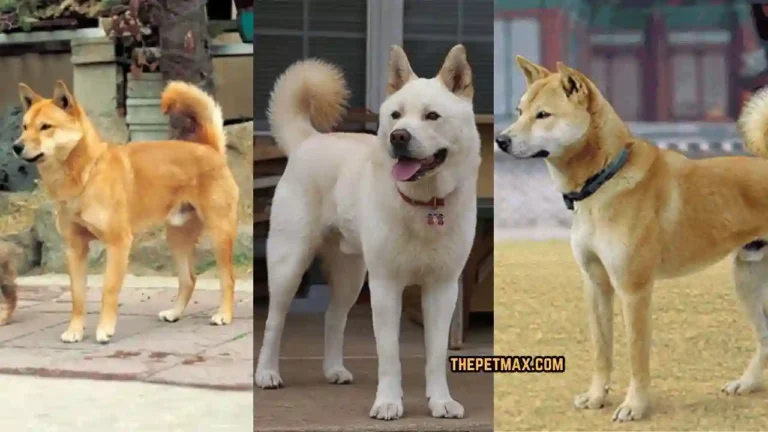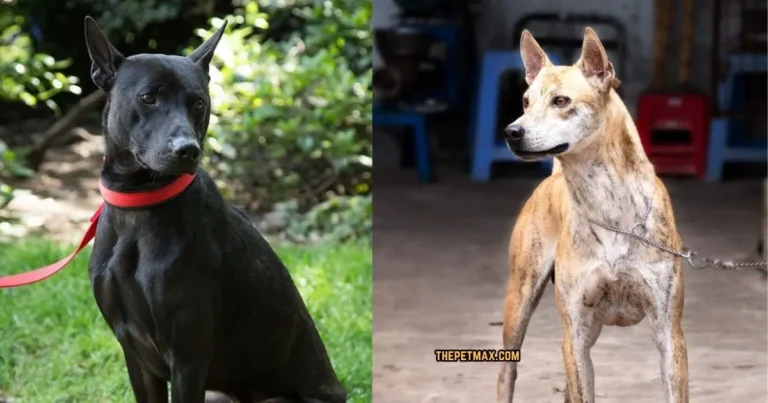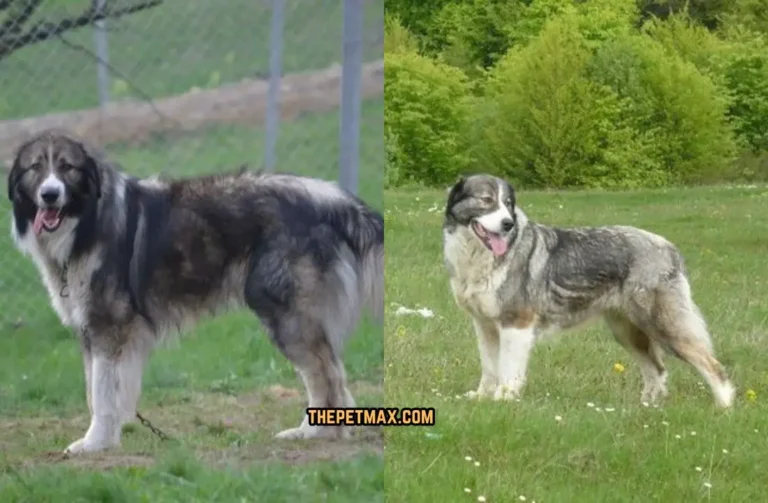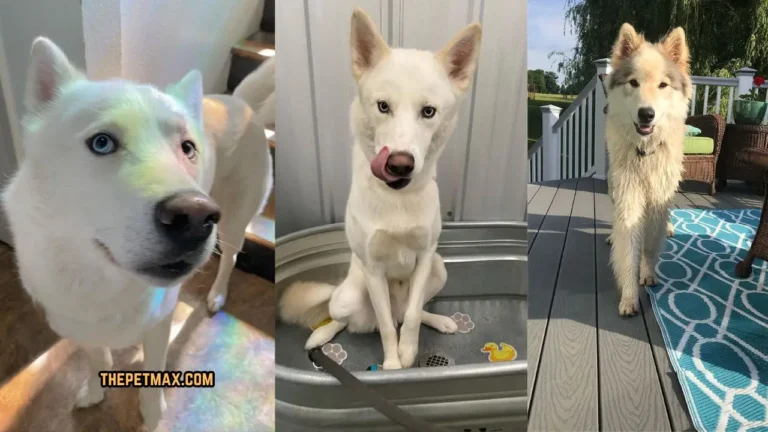Korean Mastiff Dog Breed Guide

The layer of the Korean Mastiff is short, smooth, and gleaming. Red, chocolate, and mahogany are all acceptable colors, and white markings on the chest are allowed.
This huge, monstrous dog stands somewhere in the range of 23 and 30 inches tall and weighs somewhere in the range of 145 and 185 pounds. He has the everyday appearance of a great mastiff with a large head and a large wrinkled body.
The square nose and broad nose merge into a broad, black nose. The wide ears are delicate and near the head. The eyes are dark in color, spaced widely, and of medium size. The body is rectangular.
Contents
- 1 History of Korean Mastiff Dog Breed:
- 2 Some Quick Facts about Korean Mastiff:
- 3 Korean Mastiff Dog Breed Overview & Appearance:
- 4 Temperament of Korean Mastiff Dog Breed:
- 5 Are Korean Mastiff Good Family Dogs?
- 6 Are Korean Mastiff Good with Other Pets?
- 7 Food and Diet Requirements of Korean Mastiff:
- 8 Exercise Needs of Korean Mastiff:
- 9 How to Train Korean Mastiff Dog Breed?
- 10 Grooming Needs of Korean Mastiff:
- 11 Common Health Problems of Korean Mastiff Dog Breed:
- 12 FAQ’s:
- 13 Conclusion:
- 14 Related Posts:
History of Korean Mastiff Dog Breed:
The history of the Korean mastiff is very interesting! In Korea, this genre has a long and varied history. They were raised as guard dogs and are known for their protective instincts and strength.
Korean Mastiffs are used for hunting big game and guarding livestock and property. For a long time, they were highly praised for their unity and courage. Today, they still show great qualities as family pets. It’s amazing how their experiences shaped them into who they are today
In general, Korean Mastiffs were bred to monitor and guard pets, as well as to serve as hunting and guard dogs. Its size, strength, and defensive drive make it a favorite companion for Korean ranchers and herdsmen.

The origin of the Korean Mastiff is unclear, but it is believed to have evolved from other mastiff-like dogs that have long been present in the region. Other large mastiff breeds, originally from Korea, were introduced through trade or migration and may have contributed to the breed’s lineage.
Korean Mastiffs are known for their devotion, intelligence, and defensive drive, making them ideal guardians for those who see the value in their unique qualities.
Some Quick Facts about Korean Mastiff:
- Originally from Korea, this dog was bred as a guard and hunting dog.
- It “reflects” in the first person.
- Korean Mastiffs are known for their loyalty, intelligence, and protective abilities
Korean Mastiff Dog Breed Overview & Appearance:
These Mastiffs are unsuitable for owners without open houses or real estate due to their enormous size. Body size is 23 to 27 creeps for females and 26 to 30 crawls for guys. Weight differs from 150 pounds for little females to almost 200 pounds for huge guys.
They come in a variety of solid colors, most of them shades of brown, and their fur is always short and thin. The ears are long and droopy. The most notable feature of the Korean Mastiff is its pronounced contortion, especially throughout its body.
| Height | 22 to 30 inches |
| Weight | 145 to 185 pounds |
| Lifespan | 7 to 12 Years |
| Temperament | Loving, devoted, and mellow, but can be dominant around other dogs |
| Litter Size | 4 to 6 puppies |
| Group | Working |
| Size | Males: 64 to 76 cm (25.5 to 30 inches) Females: 59 to 68 cm (23.5 to 27 inches) |
| Colors | Red and various shades of brown |
| Coat | Short, silky and shiny |
| Shedding | Moderate |
| Puppy Price | $2,000 to $5,000 USD |
Temperament of Korean Mastiff Dog Breed:
Although most mastiffs are friendly, gentle dogs, they require proper socialization and training. The specific goal of their breed is to protect and monitor, so many Korean mastiffs are suspicious and wary of outsiders.
Dogs need to be exposed to different people and social situations, otherwise they will react as adults. A cute, fluffy pig that loves to compliment and lick people’s faces!
A puppy’s energy level changes when the puppy is around 6-10 months old. Providing social opportunities is very important at this time in their lives. At least twice a week, your dog should have good interactions with other people. For everyone’s protection, use a collar: Your Mastiff must always wear a collar.
Are Korean Mastiff Good Family Dogs?
Under the right conditions, the Korean Mastiff (also known as the Dosa Mastiff or Korean Dosa Gai) can be a good family dog. They are known for their trusting, protective, and gentle nature towards their families. However, it’s important to consider a few variables before choosing whether it’s right for your loved one:
- Size and Strength
- Training and Socialization
- Exercise Needs
- Temperament
- Grooming and Care
Finally, the Korean Mastiff is a good family dog for families, who understand and solve their requirements, training, socialization and maintenance problems. They thrive under the attention, love, and guidance of their owner.
Are Korean Mastiff Good with Other Pets?
Korean Mastiffs can get along with a variety of pets, but this usually depends on their socialization, preparation, and personal behavior. For them to learn how to interact properly with other animals, early socialization is essential.
Some Korean Mastiffs have herding powers, which can be very tempting when they are introduced to gentle pets such as cats and gentle dogs. However, with careful preparation and early socialization, they can learn how to get along well with different pets in the house.

When they are working with other animals for the first time, it is very important to pay attention to them and provide a good experience. In addition, providing a separate room or safe place for each pet will help reduce the stress and allow them to stay calm.
Keep in mind that every dog is different, so while some Korean Mastiffs will get along well with certain types of pets, others will require constant care and management to get along well in a multi-pet household.
Food and Diet Requirements of Korean Mastiff:
Your Korean Mastiff’s diet should include high-quality dog food that meets his nutritional needs. Their dietary guidelines are as follows:
- Good Food for Dogs: Look for high-quality dog food with meat as the main ingredient, such as fish, chicken or beef. Avoid foods that contain unnecessary fillers, fake additives, or poor quality.
- Protein: Like many large breeds, the Korean Mastiff benefits from a diet rich in quality protein to promote muscle growth and overall health.
- Adjust the diet: Their diet should include a balance of protein, starch, fat, nutrients, and minerals. You can find commercial sources of dog food formulated for different breeds, and they are expensive because of their health requirements.
- Mineral Water: Keep hydrated throughout the day, so they always have access to clean, fresh water.
Remember that every dog has specific nutritional needs, so it’s best to talk to your vet about a diet or to tailor a diet to your Korean Mastiff’s specific needs.
Exercise Needs of Korean Mastiff:

The Korean Mastiff is a large, energetic dog that needs daily exercise to maintain physical and mental health. Getting enough exercise can prevent obesity, maintain mental performance, and increase your energy level. Here are some rules for grooming your Korean Mastiff:
- Regular work: 30 to 1 hour of light work per day. This may include walking, running, or meeting in a fenced yard.
- Intelligent Games: Join them in simple games like fetch, fetch, or search for puzzles to stimulate their brains to keep them active.
- Type of exercise: Show variation in daily exercise. They can benefit from a variety of exercises such as climbing, swimming (if they enjoy it and think it’s safe for their relationship), or exercise.
- Mental Feeling: Stimulates the mind through puzzles, planning assignments, and activities that challenge their cognitive abilities. Mental exercise is just as important as physical exercise for these dogs.
- Consistency: Stick to a predictable activity schedule to help them burn off excess energy and prevent social problems that can result from fatigue or lack of travel.
Always consider your dog’s age, health, and personal preferences when determining your dog’s daily exercise schedule. Also, be sure to drink plenty of water during and after exercise to stay hydrated. An exercise program that meets your Korean Mastiff’s unique needs can be created with the help of your veterinarian.
How to Train Korean Mastiff Dog Breed?
Training the Korean Mastiff is the strategy of anticipatory response and stimulation and early socialization. To train a Korean Mastiff, follow these steps:
- Start Early: Start planning and socializing early. This will help them learn good behavior and become calm adults.
- Positive feedback: To reinforce good behavior, give rewards, praise, and playtime. Encouraging feedback will encourage them to re-examine the behavior you want to see.
- Basic commands: Shows basic commands like “sit”, “stay”, “come” and “down”. Start with short exercises and add more as you progress.
- Relationships: Adapting them to different people, creatures and environments in a positive way. This prevents fear or hostility towards new situations or people.
- Patience and Calmness: The Korean Mastiff likes a calm and patient grooming strategy. Avoid heavy strokes as they can cause anger or fear.
Remember, no two dogs are the same, so preparation will vary. Consistency, patience, and positive feedback are the foundation of Korean Mastiff training. If you’re having trouble, seek advice from a counselor or behaviorist who knows how to deal with a variety of issues.
Grooming Needs of Korean Mastiff:

Korean Mastiffs require less maintenance than other breeds, but they benefit from daily routines to keep them healthy and comfortable. Here are some care tips for Korean Mastiffs:
- Brushing: Their hair is short and sheds easily. Regular grooming at least a few times a week will help eliminate shedding, reduce shedding, and keep your coat in good shape.
- Washing: Wash regularly or when necessary, for example when it gets dirty or starts to smell. Use a gentle dog wash and try not to strip the skin of oil.
- Nails: Keep your nails the same length. Long nails can be uncomfortable and make walking difficult. Be careful when cutting your nails and try not to cut the blood vessels in your nails.
- Skin and coat health: Pay attention to your skin for signs of irritation, dryness, and other problems. A healthy coat requires a healthy diet and regular grooming.
- Professional Grooming: Although they do not need regular training like other breeds, you should consider regular grooming, especially for nail management and special needs.
Providing space for your Korean Mastiff regularly will not only keep them looking and feeling good, but you will also be able to monitor their overall health. If you’re not sure how to properly prepare, ask a professional groomer or veterinarian for guidance.
Common Health Problems of Korean Mastiff Dog Breed:

Like all breeds of dogs, Korean Mastiffs can suffer from certain medical problems. Although not everyone will experience these problems, monitoring potential health problems can help in early identification and proper treatment. Some common health problems in Korean Mastiffs may include:
- Hip Dysplasia: This is a condition in which the hip joint does not fit as expected, resulting in instability, weakness, and joint pain.
- Neck disease: Like hip dysplasia, this condition affects the elbow joint and can cause pain and discomfort.
- Bloat (Gastric Dilatation-Vovolvulus): Large, deep-chested breeds, such as the Korean Mastiff, can suffer from bloat, a disease that causes the stomach to become distended and filled with gas. If you think you have a rash, you should seek medical attention immediately.
- Skin irritation: Allergies can manifest as skin irritation, itching, or dermatitis.
- Heart problems: Some Mastiffs are prone to certain heart conditions, such as cardiomyopathy.
Regular check-ups with a veterinarian, maintaining a good diet, proper exercise, and good breeding practices can help alleviate some of these health problems. In addition, early identification and treatment are essential to successfully monitor the drug problem. If you are considering getting a Korean Mastiff, choosing a reputable breeder who can evaluate these medical problems will reduce your pet’s chances of developing problems.
FAQ’s:
Do korean Mastiff bark a lot?
Korean Mastiffs are generally calmer dogs and are not known for being aggressive compared to other breeds.
Do Korean Mastiff have a high prey drive?
Korean Mastiffs tend to have a low to high drive, which can change within a population. Proper planning and outreach from the beginning will help monitor and manage these dynamics.
Conclusion:
The Korean Mastiff is a popular, loyal, and protective companion. Their gentle nature to relatives, and their large size, make them ideal gatekeepers. However, it takes early training, thorough preparation, and regular practice to develop. With the right mindset, they can be gentle, giving family members, giving friendship and steadfastness to those willing to give time and strength for their own good.





